Snapshot introductions focus on specific highlights, revealing diversity and/or sometimes similarities between family farming experiences.
June 5 2015 for World Environment Day Welcome to IYFF+10 family farms snapshots – here for you to discover their diversity in the world, now in the decade continuing on from the 2014 International Year of Soils.

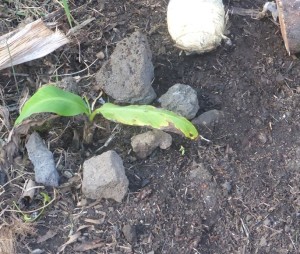 The latest additions are both great examples for the World Environment Day 2015 theme: from Samoa- “Growing food as a family for our family” and Kenya – “Married to my food forest.” Suggestions for curriculum Links to use these for 2015 WED theme “Seven Billion Dreams. One planet. Consume with Care.” can be found in the World Environment Day section of the teaching page.
The latest additions are both great examples for the World Environment Day 2015 theme: from Samoa- “Growing food as a family for our family” and Kenya – “Married to my food forest.” Suggestions for curriculum Links to use these for 2015 WED theme “Seven Billion Dreams. One planet. Consume with Care.” can be found in the World Environment Day section of the teaching page.
From a rural village the island of Upolu, Samoa, a youngster confidently shares what he has already learnt much about growing food from his father in this 2.4 Mb pdf Sa’anapuSamoa Discover how to plant and grow, cook and feast traditional plant foods – especially talo, and fa’i – on their volcanic soils. Notice how food consumption from here uses so many natural materials and so is a great example of consuming with care.
From a rural village on Lake Victoria in Kenya on Mfangango Island, a permaculture farmer, father, and teacher, enthusiastically shares his farm and farm-based community work at Olambo’s Organic Paradise Farm in this 2.8 Mb pdf Foodforest-Kenya . There are not only choices of plants to grow in layers of a food forest by issues of erosion, waterlogging and weeds to be managed and improved. Notice also how much care is taken of his environment in producing the food that this family and its community consume.
 5 March 2015 – You should always be learning – like us and our tomatoes etc in our 80’s”, Warracknabeal Introducing the first 2015 family farm snapshot from another 80+ couple, retired grain farmers. Their part-time urban family farming is on a small plot and tubs in their yard. It’s wonderful to hear from people like them, who have been growing food all their lives, excited about what they can and still do. They live out ‘always learning’ and enjoy eating what they grow, especially Grosse Lisse tomatoes and Muntries. On soils, their town soil was not as fertile as their farm had been, so they brought some in from the farm to mix with it. Stillearningat80-Warracknabeal (2.1 mb pdf)
5 March 2015 – You should always be learning – like us and our tomatoes etc in our 80’s”, Warracknabeal Introducing the first 2015 family farm snapshot from another 80+ couple, retired grain farmers. Their part-time urban family farming is on a small plot and tubs in their yard. It’s wonderful to hear from people like them, who have been growing food all their lives, excited about what they can and still do. They live out ‘always learning’ and enjoy eating what they grow, especially Grosse Lisse tomatoes and Muntries. On soils, their town soil was not as fertile as their farm had been, so they brought some in from the farm to mix with it. Stillearningat80-Warracknabeal (2.1 mb pdf)
Welcome to family farms snapshots – here for you to discover their diversity in the world!
 22 Dec 2014 “We are aware of our good fortune to be able to farm a rich, while highly restrictive, mountain landscape”
22 Dec 2014 “We are aware of our good fortune to be able to farm a rich, while highly restrictive, mountain landscape”
The latest snapshot, in both Français and English, is on lowland slopes of the mountainous Savioe, in France, producing a wide variety of plants.
Like the previous snapshot, the landscape at the Koute à Tyon –Tyon Koute is being changed into one that produces plant food for its family and provides shelter for Nature, but on a grander scale and full-time. Inspired by Nature to create a farm that uses simple traditional methods, the Tyon Koute, is restoring land that was in production for a thousand of years until a few decades ago. There are challenges from soils, slope and climate, as well as thorough research of this unique environment to be able to farm it on permaculture principles adapted for a lowland alpine environment.
Be amazed by the comprehensiveness of the research that has gone into this farm, and the unexpected beauty of its insects in this 2.1 Mb pdf alpinopermaculture-KouteArvillard-FrvEng in English and Koute-Tyon-Arvillard-Fr in French.
This is the last snapshot for 2014. Thank you to the 29 family farm contributors – you are inspiring family farmers:
rural (19, from Australia, Canada, France and Samoa)
and urban (10, from Wimmera small towns to the big city in Melbourne).
Many of you had not heard the term ‘family farmers’ at the start of this year, but now understand that your feeding your family is contributing to the world’s food security and caring for your patch of Earth is also keeping low food miles – an action against climate changes.
This website will continue on growing the collection with more family farm snapshots in 2015 – I have some in production already and hope you can help me by suggesting more farms to add to the diversity. With soils being mentioned by most snapshots in the Caring for the Earth section, this website will contribute to the 2015 International Year of Soils.
Wishing you all blessing at this Christmas and New Year Season. Jeanie
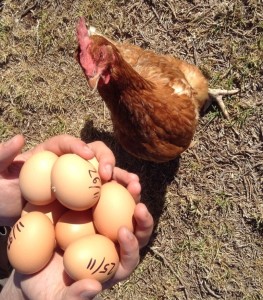 15 December “It’s a great feeling to grow your own food and make something delicious with it!”
15 December “It’s a great feeling to grow your own food and make something delicious with it!”
The latest snapshot is semi-rural and small, with food plants and animals on the Darling Downs of southeastern Queensland, Australia.
In this latest snapshot, developing a part-time family farm in a new farmlet community, on a 1/2 acre of former cleared grazing land, has the same motivation to produce great food as a large full-time farm like the last new one from the Yukon, and likewise faces challenges from soil, weather and predators. There is lots to learn about farming – and food to enjoy already – on the Darling Downs in producing eggs, a little fruit and several vegetables for the couple to use, and providing habitat for birds, reptiles, insects … maybe even a home for native bees in the future. Enjoy how this little farm is developing in this 1.5 Mb pdf settlingfarmlet-HighfieldsQld
Poultry is at the heart of this farm and the previous one. While Red Bros were used in the Yukon farm, here we have ISA Browns ( aka Reds). These hens are popular for their egg production and have also been found in other Australian snapshots feeding couples or families with similarly small sized farms:
60yrfamilyfarming-Wimmera in Victoria for a couple in their 80’s
new-ways-Jeparit Wimmera – for a small family living on their farmland with a food garden and non-farm businesses
Ecobotanica, South East Queensland, Australia- as part of a permaculture farm garden
In the Yukon, their hens were Red Bros.
9 Dec It’s all about the food and feed – Aurora Mountain Farm, Yukon, Canada
The latest snapshot is also a diversified rural one with plants and animals, and well on its way to self-sufficiency – a long way from the Wimmera, we welcome the Yukon, Canada. 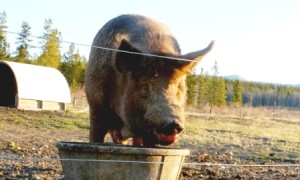
It’s all about food and feed at the Aurora Mountain Farm – producing certified organic meats, eggs and plant products, from their farm-gate, farmers’ markets and on-line. With their long-term commitment to be a fully sustainable (includes zero-balance) , functional and reasonable (ethical and profitable) family farm in their challenging climate and environment , they contribute to Feeding the World – their family and Yukon community. Their Caring for the Earth includes research and experimentation, being part of community organisations and sharing their vision of connecting people to their food and natural products like soap and textiles.
As a leading light in its community, so it is inspiring to see what is being achieved in this 2.23 Mb pdf Food&feedAurora-Yukon snapshot. You may like to compare it with other snapshots leading the way with in other regions:
Garden of Earthy Treasure – Wimmera, Australia, aquaponics in a semi-arid region aimed at self-sufficiency
Ecobotanica, South East Queensland, Australia- setting up a new permaculture farm and education centre
koute a Tyon – Savoie, France – alpino permaculture rediscovering ancient moutain agricultural ways and updating them for today with research ( in French) .
Cambinatta Yabbies West Australia– yabbies in the broad-acre belt, the base for on-farm and on-line sales, and dining and tourist facilities
Apostles whey cheese southern Victoria – from the dairy to on–farm cheese production, sales and education tours
Orangedale Apples Nova Scotia, Canada – apples and farmers markets, and harvest to support of L’Arche community
2 Dec – Garden of Earthy Treasures –introducing ‘xeriscaping’ Dimboola, Vic
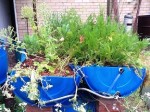 The latest snapshot is also a rural one coming from the Australian broad-acre farm belt, but chooses to be small, intensive and aim for self-sufficiency – quite different from earlier ones.
The latest snapshot is also a rural one coming from the Australian broad-acre farm belt, but chooses to be small, intensive and aim for self-sufficiency – quite different from earlier ones.
Every family farmer faces challenges, and experiments with, and chooses, ways to deal with these. In an area where broad-acre farms are hard work, how could a small, intensive, self-sufficient farm succeed – the vision of the Garden of Earthy Treasures. Xeriscaping methods are making this possible, with fish, poultry, fruit, vegetables, herbs, and bush foods already feeding the family. What does xeriscaping actually mean? You’ll find the answer when you read this 1.9MB gdnearthytreas-Dimboola and see how different its food production is to the previous snapshot Life on the Hill at Poochera.
To achieve its production, the Garden uses mediums for growing food, and is influenced by permaculture and organic farming techniques. For how they are similar and different, see previous snapshots for these methods : Happy Family farming, (Ballarat); OurTreed house, (Glen Waverley); Ecobotanica (SE Qld); organic Fanufuaa (Samoa) and Jardin de la Koute de Tyon, Arvillard, France (almost finished the translation!) 
Regardless of the methods, all snapshots show farmers’ concerns for their soils. World Soils Day is on December 5, with the theme “Where food begins”. I have put an activity suggestion for World Soils Day on the “4teachers‘ page of this website under the theme Where food begins
26 Nov – Life on the hill – intangible benefits of family farming- Poochera, S. A
The latest is a rural one, a tribute to full-time traditional cereal-sheep family farming in South Australia.
 Across the Australian grain belt there are challenges from the climate and soils, but production continues well most years. Life on the Hill, Poochera, South Australia produces sheep and cereals for Australian and the world’s food and the family, who also have foods from their home garden, despite low rainfall and poor soils. Crop rotation and sheep help maintain soil health. The farm has nature to enjoy in remnant Mallee habitat and the wonderful wide sky views. When the family leaves this rural farm, they take with them a love and appreciation of Nature and of growing foods they eat. Enjoy the beauty of this large family farm overlooking the Gawler Ranges, in this 1.12 MB pdf lilfeonhill-Poochera
Across the Australian grain belt there are challenges from the climate and soils, but production continues well most years. Life on the Hill, Poochera, South Australia produces sheep and cereals for Australian and the world’s food and the family, who also have foods from their home garden, despite low rainfall and poor soils. Crop rotation and sheep help maintain soil health. The farm has nature to enjoy in remnant Mallee habitat and the wonderful wide sky views. When the family leaves this rural farm, they take with them a love and appreciation of Nature and of growing foods they eat. Enjoy the beauty of this large family farm overlooking the Gawler Ranges, in this 1.12 MB pdf lilfeonhill-Poochera
For similar challenges and different responses across the Australian grain belt, see these earlier snapshots eg foods-from-Batchica , Primary Production Bangerang, Crops & Livestock Jeparit, new-ways-Jeparit and crops&yabbies-KukerinWA
19 Nov – From lettuces … to fundraising from 1/3rd of the backyard, Croydon
The latest is a suburban one which begun with lettuces..and grew to support fundraising.
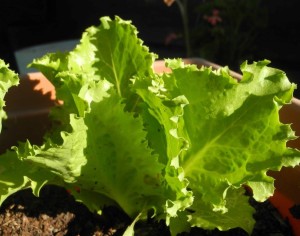 The taste of freshly picked lettuce was the trigger for the latest snapshot – just a couple of lettuces in pots that looked nice and tasted so good, that more plants were added until a third of the backyard lawn was an itsy bitsy vegetable, fruit and herb garden, some of which goes to fundraising events ! Along the way, poor clay soils were replaced, worm farms and rainwater tanks added, and people became aware that backyards can produce such good food. Enjoy the love that is put into growing these mixed vegetables, fruit and herbs. Download a 1.79 MB pdf itsybitsy-Croydon
The taste of freshly picked lettuce was the trigger for the latest snapshot – just a couple of lettuces in pots that looked nice and tasted so good, that more plants were added until a third of the backyard lawn was an itsy bitsy vegetable, fruit and herb garden, some of which goes to fundraising events ! Along the way, poor clay soils were replaced, worm farms and rainwater tanks added, and people became aware that backyards can produce such good food. Enjoy the love that is put into growing these mixed vegetables, fruit and herbs. Download a 1.79 MB pdf itsybitsy-Croydon
12 Nov – Organic Family Farming, Upolu, Samoa
Welcome to family farms snapshots – here for you to discover their diversity in the world! The latest is an organic family farm in Samoa.
It is a great pleasure to introduce this snapshot from the island of Upolu, Samoa, on fanua fa’a– customary /traditional land- growing mainly island staples on a registered organic farm. Samoa’s soils and climate are great for the organic growing of foods: a mixed food garden with talo, ta’amu, fai, niu and ulu, a range of vegetables and pigs and hens. Enjoy the richness of the greens and meals in this 2 Mb pdf organic-Fanuafaa-samoa As this year is also the International Year of Small Island Developing States, in reading this snapshot, you will have also participated in one of its aims – raising awareness of the people there and their lives.
Samoa, on fanua fa’a– customary /traditional land- growing mainly island staples on a registered organic farm. Samoa’s soils and climate are great for the organic growing of foods: a mixed food garden with talo, ta’amu, fai, niu and ulu, a range of vegetables and pigs and hens. Enjoy the richness of the greens and meals in this 2 Mb pdf organic-Fanuafaa-samoa As this year is also the International Year of Small Island Developing States, in reading this snapshot, you will have also participated in one of its aims – raising awareness of the people there and their lives.
Continue on below for more snapshots from France, Canada and Australia, especially the Wimmera …. (and i’m still looking for more to capture more diversity still for this educational resource)
30 October 2014 AIAF en Savioe- labeur montagnard et gardiens de leur terre
Come, discover family farms! Allons, decouvrons les fermes familiales. J’ai le grand plaisir de vous présenter la première ‘snapshot’ en français pour l’AIAF.
Il s’agit une bonne ferme familiale dans la jolie Savoie en France. Là, on restore la terre, les plantes et quelques animaux, and utilise les practiques de l’alpino-permaculture pour produire la nourriture de leur jardin.
« S’inspirer de notre nature pour créer un jardin familial alpin et collinéen avec des pratiques simples et respectueuses. Le “jardin de la Koute à Tyon” est une petite ferme familiale située en Savoie – France. Ici, on s’appuie sur l’observation des milieux et espèces présentes, les essais et l’utilisation de techniques culturales proche d’une alpino-permaculture pour produire les légumes, les fruits, les plantes aromatiques et officinales. Pour lire ce snapshot et voir beaucoup de jolies photos, cliquez sur ce lien pour un pdf de 1.9MB http://familyfarms.enviroed4all.com.au/wp-content/uploads/2014/02/Koute-Tyon-Arvillard-Fr.pdf
22 October What motivates part-time urban family farmers?
“The more I can do for myself, the better –and, it is also helping the Earth” 
The latest snapshot is from Dimboola, where a part-time lady urban family farmer (aka kitchen/backyard gardener) has dedicated her backyard to growing yummy, healthy food for use in as many of her meals as she can, especially eggs from her Silky Hens, and vegetables from her tubs.
Be inspired by her motivation to think and care about the food she produces in 3hens&foodplants-Dimboola.
Consider similarities and differences to previous urban family farming snapshots listed below, especially the last two treedhouse-GlenWaverley and mint-tubs-horsham.
6 October Food from backyard urban gardens
The two latest snapshots show two very different sized examples, from tubs to the width of a backyard. 
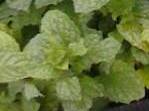 But the family farmers share attitudes of valuing having some home-grown food for their meals and growing food as a recreation from their full-time jobs. Be inspired to grow some foods this spring in your backyard or in tubs by these Victorian snapshots from part-time urban family farmers. Enjoy the aroma of mint-tubs-horsham. Discover over 30 different fruits, vegetables and herbs grown in a large backyard garden last season in treedhouse-GlenWaverley , where the trees also provide a challenge to family farming while caring for the Earth –sunlight for food v tree foliage habitat.
But the family farmers share attitudes of valuing having some home-grown food for their meals and growing food as a recreation from their full-time jobs. Be inspired to grow some foods this spring in your backyard or in tubs by these Victorian snapshots from part-time urban family farmers. Enjoy the aroma of mint-tubs-horsham. Discover over 30 different fruits, vegetables and herbs grown in a large backyard garden last season in treedhouse-GlenWaverley , where the trees also provide a challenge to family farming while caring for the Earth –sunlight for food v tree foliage habitat.
6 September Innovation in the wheat-sheep belt – a full-time 3 -gen family farming adds yabbies 
The latest snapshot features another way to keep the family on the farm – diversifying into new primary production and on-farm businesses based on them, contrasting with the non-farm on-farm businesses added from Victoria last time.![]()
In the West Australian ‘wheat-sheep belt’, a traditional farm first chose primary production based businessesto diversify into. They added a newly developing crop, lupins, … gathering honey for sale …. and then farming yabbies in the dams. As the family grew, processing was added, then on-farm value-adding, a function centre and more recently tourism! 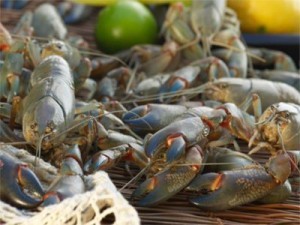
This unique family farm supports a three generation family, not only enjoying some of their own food produce, but also through providing grains, yabbies and gourmet foods across Australia and to the world. In doing so, they care for their earth, planting trees into wildlife belts and using minimum till practises. Be amazed at the creativity on this farm, led by award winning farmer Mary Nenke, and delight in the diversity of her family’s farm in crops&yabbies-KukerinWA
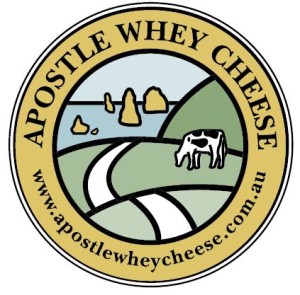 Value-adding and tourism were also diversification options also developed by Apostle Whey Cheese dairy farm in southern Victoria, reported early in this project. See cowstocheese-swVic
Value-adding and tourism were also diversification options also developed by Apostle Whey Cheese dairy farm in southern Victoria, reported early in this project. See cowstocheese-swVic
Snapshots about the challenge of supporting a family on our broad-acre farms, are, foods-from-Batchica , and Primary Production Bangerang .and new-ways-Jeparit
23 August – Innovative ways to be part-time family farming on ‘small’ Wimmera acreages
The latest snapshot highlights another difference between family farming in the Wimmera – the small holder in a region where farms are large. What can small acreage farmers do if they want to stay on their land, and not sell out to bigger farms?
![]() In this snapshot, the family meets this challenge by share-farming out their large paddocks to a larger farmer to grow legumes, cereals and oilseeds for the world, while setting up non-farm businesses (aviation and massage) on their farmland. Thus they remain part-time family farmers, growing their own eggs, vegetables and other foods in the farm backyard; ‘using some of the share-farm produce for their food too, and supporting their agricultural income with non- farm income. This is also a family with a committment to caring for the Earth and planting trees back into their farmscape. Be inspired by reading new-ways-Jeparit
In this snapshot, the family meets this challenge by share-farming out their large paddocks to a larger farmer to grow legumes, cereals and oilseeds for the world, while setting up non-farm businesses (aviation and massage) on their farmland. Thus they remain part-time family farmers, growing their own eggs, vegetables and other foods in the farm backyard; ‘using some of the share-farm produce for their food too, and supporting their agricultural income with non- farm income. This is also a family with a committment to caring for the Earth and planting trees back into their farmscape. Be inspired by reading new-ways-Jeparit
Previous examples of the large Wimmera crop and livestock farms which produce 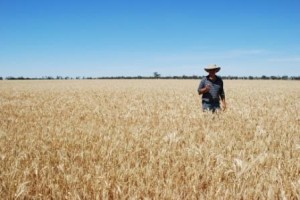 food for the world are in these snapshots foods-from-Batchica , Primary Production Bangerang and Crops & Livestock Jeparit . These family farmers also produce fruit and vegetables for their needs in their backyards.
food for the world are in these snapshots foods-from-Batchica , Primary Production Bangerang and Crops & Livestock Jeparit . These family farmers also produce fruit and vegetables for their needs in their backyards.
In the last fortnight I have been ‘putting farming’ in to National Science Week in the Wimmera- Mallee for community and school groups. Read reports from these sessions, including why groups thought we should “Celebrate our great grains‘.
9 Aug- Valuing fresh food and soil care
Our two latest family farms come from the Central Highlands and the Wimmera in Victoria. 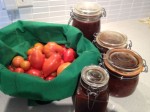 As family farms, they have in common that they produce food for their kitchens, but there is more. They both have young children and value the opportunities their farms provide for them. They both also have challenges with the soils on which their farms are based. However they are quite different though in many ways:
As family farms, they have in common that they produce food for their kitchens, but there is more. They both have young children and value the opportunities their farms provide for them. They both also have challenges with the soils on which their farms are based. However they are quite different though in many ways:
*one grows crops and stock for the World, literally’ , for the other, the ‘World’ reaches to the local farmers’ market;
* one has old seabed formed soils, the other newer volcanic based soils;
* one is on flat land, the other hilly;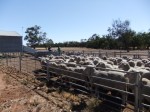
* one is a large broad-acre farm providing the main income for the family, the other is much smaller and not the family’s main income source.
Overall, what do they most in common? They love where they live and what they do as family farmers. Enjoy reading Happy-family-farming-Ballarat and foods-from-Batchica .
24 July Sharing produce
Hooray! Today we go international, with a wonderful snapshot redapples+Canada 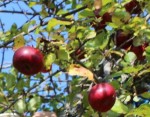 . (Thanks BJ. ) This mixed family farm has fed a large family with meats, fruits and vegetables and more , and had excess to sell at farmers’ markets. But this family farm’s sharing of its excess for apples is even more inspiring- going to help their local “L’Arch /Larch” community who harvest and sell their yummy red apples and use the proceeds to help fund homes for people with disabilities. Though the family has grown up and left and the parents now have off-farm jobs, they still love growing and having a large variety of fresh foods from their farm.
. (Thanks BJ. ) This mixed family farm has fed a large family with meats, fruits and vegetables and more , and had excess to sell at farmers’ markets. But this family farm’s sharing of its excess for apples is even more inspiring- going to help their local “L’Arch /Larch” community who harvest and sell their yummy red apples and use the proceeds to help fund homes for people with disabilities. Though the family has grown up and left and the parents now have off-farm jobs, they still love growing and having a large variety of fresh foods from their farm.
21 June – Food reflects culture!
This latest snapshot for-Greek-Kouzina-BoxHill shows this. The mother, a migrant from Greece 40 years ago, grows the fruits, vegetable and herbs, in her Melbourne garden – a suburban family farm. She uses these in her cooking (Greek recipes) for her family in her kouzina. There is quite a list of food plants here, with their Greek names. Some will be expected for Greek cookery, and some might be a surprise. The snapshot also contains a challenge unique to a suburban family farm- balls landing on plants from the neighbours!
from Greece 40 years ago, grows the fruits, vegetable and herbs, in her Melbourne garden – a suburban family farm. She uses these in her cooking (Greek recipes) for her family in her kouzina. There is quite a list of food plants here, with their Greek names. Some will be expected for Greek cookery, and some might be a surprise. The snapshot also contains a challenge unique to a suburban family farm- balls landing on plants from the neighbours!
1 June for World Enviornment Day – from small suburban backyards
What food can you grow in a small suburban backyard? Read about the food plants – fruit, 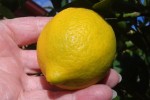 vegetables and herbs -in two suburban gardens under 10 years old, grown mainly in pots in herbpots-Horsham (a 657kb pdf) and dominated by citrus trees in littlefoodgarden-Horsham (a 1.36 MB pdf) . Thse two Horsham Probus Ladies, part-time family farmers, enjoy seeing their plants change as they grow, going out the back door to pick their food, and the taste of the meals and drinks they make from them.
vegetables and herbs -in two suburban gardens under 10 years old, grown mainly in pots in herbpots-Horsham (a 657kb pdf) and dominated by citrus trees in littlefoodgarden-Horsham (a 1.36 MB pdf) . Thse two Horsham Probus Ladies, part-time family farmers, enjoy seeing their plants change as they grow, going out the back door to pick their food, and the taste of the meals and drinks they make from them.
Their snapshots are just in time for World Environment Day June 5. Part-time family farming in backyards is a local action which contributes to caring for the global environment by  keeping down some food miles, greenhouse gas emissions and carbon footprints.
keeping down some food miles, greenhouse gas emissions and carbon footprints.
Inspired by these ladies, if you don’t grow anything you eat yet, maybe you can get a potplant or box too and put in a herb or small food plant!
21 May – with Trees come the birds
The latest snapshot is a beautiful grazing and timber farm in southern Victoria, with an amazing range of foods being grown and birds visiting – thanks to their large numbers of trees planted into the landscape over 25 years. See “with trees come the birds” on the snapshot page.
6 May – Octogenarian family farmers
Will you be growing food in your 80’s? These octogenarian family farmers are! They have been growing food for their family from their home gardens all their lives. All enjoy growing foods close to home, eating their own produce and sharing it.
Read about one in the city, 50yeargarden-Box Hill , 
another on a rural farm , 60yrfamilyfarming-SheepHills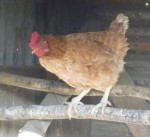
and the third in a rural town town food garden Jeparit.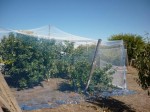
Earliest loaded family farms
Ballistic Zucchinis and other vegetables and herbs in an urban backyard, Horsham, producing yummy foods last summer – download a 423kb pdf zucchinisHorsham
backyard, Horsham, producing yummy foods last summer – download a 423kb pdf zucchinisHorsham
Well e stablished farmers garden with fruit trees and vegetables on a Crop and Livestock farm, Jeparit, – Download a 1.4 Mb pdf Crops & Livestock Jeparit
stablished farmers garden with fruit trees and vegetables on a Crop and Livestock farm, Jeparit, – Download a 1.4 Mb pdf Crops & Livestock Jeparit
Crop and livestock in Primary Production, Bangerang, on a farm that has been in this family since settlement. Download a 1 Mb pdf Primary Production Bangerang
a farm that has been in this family since settlement. Download a 1 Mb pdf Primary Production Bangerang
On this dairy family farm, the family has rehabitilated eroded gullies and value-added on-farm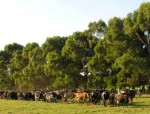 with cheese-making and farm visits to educate children in agriculture in the south of Victoria, near the Twelve
with cheese-making and farm visits to educate children in agriculture in the south of Victoria, near the Twelve
Apostles. Download a 1.5 Mb pdf cowstocheese-swVic
Cattle with almond trees on this part-time family farm in the foothills of the Great Divide in GrazingNEVic 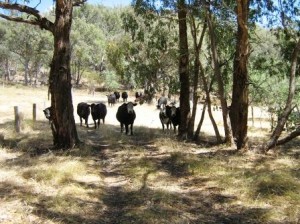
Ecobotanica, South East Queensland is a new family farm, which includes native bees, set up on a permaculture basis, Download a 1.4 Mb pdf ecobotanica familyfarm
on a permaculture basis, Download a 1.4 Mb pdf ecobotanica familyfarm
and our farm – the starting point for this website a small Texel sheep farm, Warracknabeal – Download a 342 kb pdf summary IYFF our family farmer example or view as  Texels Warracknabeal, the family and farm, production and sustainability
Texels Warracknabeal, the family and farm, production and sustainability
updated 5 June 2015
